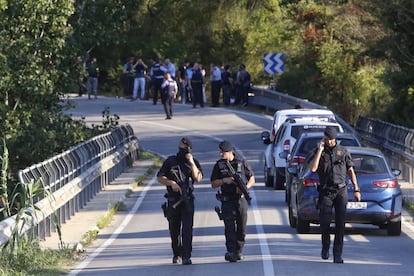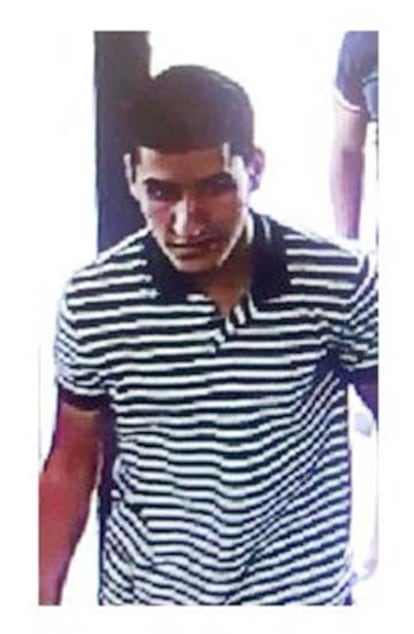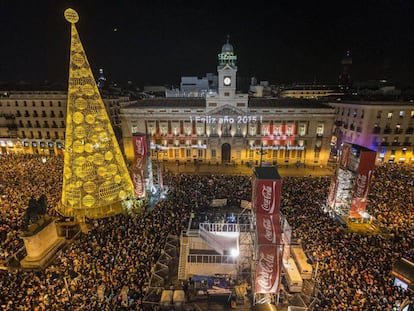Judge probes death of Barcelona terrorist who was shot down by police
Suspect was wearing fake bomb belt when he ran towards Catalan officers after killing 16 in August 2017

A judge at Spain¡¯s High Court, the Audiencia Nacional, is investigating why the Catalan police force Mossos d¡¯Esquadra shot down Younes Abouyaaqoub, the main perpetrator of the jihadist attack of August 17 in Barcelona, instead of trying to capture him alive.
The 22-year-old attacker drove a van into a crowd in a central thoroughfare, killing 16 people and injuring around 100 more. He was shot down in a volley of fire by two officers in Sant Sadurn¨ª d¡¯Anoia, about 50 kilometers west of the Catalan capital, two days later. By then the police knew that the explosives belts worn by several members of his terrorist cell were fake. Abouyaaqoub was unarmed at the time of death.
Officers stated they ordered the suspect to stop up to 10 times
After 530 meters of murderous rampage on Barcelona¡¯s packed Las Ramblas, Abouyaaqoub got out of his van and fled on foot. Along the way he also stabbed the driver of a vehicle that he attempted to take by force. His trail was lost until a resident called the Mossos d¡¯Esquadra police force at around 4pm on August 19 to report an individual lurking around her house.
Officers stated they ordered the suspect to stop up to 10 times, but that his only response was to open his shirt to reveal an explosives belt attached to his body. He then began running from an 80-meter distance towards the police, who opened fire.
All the members of the cell had been wearing fake explosives belts when they conducted a new attack in nearby Cambrils just hours after Abouyaaqoub wrought havoc in Barcelona. These other terrorists mowed six people down (one of them died in hospital days later), and carried knives that they meant to use to kill as many people as possible on the seafront promenade. They were thwarted by a Mosso, a former member of Spain¡¯s elite unit La Legi¨®n, who shot them down in the middle of the street.

Judge Fernando Andreu is now investigating whether there was really no choice but to kill Abouyaaqoub, since he was carrying no weapons and out in an open field. The Moroccan was one of the leaders of the terrorist cell, and his testimony would have been key to determine whether other people were involved in the attack.
Although Abouyaaqoub drove the van in Las Ramblas, an imam from Ripoll named Abdelbaky Es Satty is considered the real ideologue behind the August 2017 attacks, according to police and court investigators. Abdeldaky died in an explosion at a house in Alcanar believed to be the home base for the cell.
Investigators believe that the accidental explosion at the house, where the terrorists had been storing large amounts of homemade explosives as well as gas containers, led the surviving cell members to quickly orchestrate a less ambitious attack, leading to events in Barcelona and Cambrils.
For eight months, three different police agencies ¨C the National Police, the Civil Guard and the Mossos d¡¯Esquadra ¨C have investigated Es Satty¡¯s movements and relationships to determine whether he received instructions from a foreign-based ideologue. So far, ¡°no individual, emir or higher structure¡± than the Salafist preacher himself has emerged, sources from the investigation told EL PA?S.
The hate club
The imam from Ripoll single-handedly indoctrinated the 12 youths who made up the terrorist cell that perpetrated the attacks in Barcelona and Cambrils. He apparently received help from no-one, working in the style of the Takfir Wal Hijra sect, the most secretive form of Salafism and the most radical and violent movement within fundamentalism. The invisibility of its members makes them very difficult to detect, as all Western ¡°vices¡± are allowed in order to avoid detection. That is why nobody in Ripoll suspected that these young men who wore sneakers, drank alcohol and danced at nightclubs were being radicalized.
English version by Susana Urra.
Tu suscripci¨®n se est¨¢ usando en otro dispositivo
?Quieres a?adir otro usuario a tu suscripci¨®n?
Si contin¨²as leyendo en este dispositivo, no se podr¨¢ leer en el otro.
FlechaTu suscripci¨®n se est¨¢ usando en otro dispositivo y solo puedes acceder a EL PA?S desde un dispositivo a la vez.
Si quieres compartir tu cuenta, cambia tu suscripci¨®n a la modalidad Premium, as¨ª podr¨¢s a?adir otro usuario. Cada uno acceder¨¢ con su propia cuenta de email, lo que os permitir¨¢ personalizar vuestra experiencia en EL PA?S.
?Tienes una suscripci¨®n de empresa? Accede aqu¨ª para contratar m¨¢s cuentas.
En el caso de no saber qui¨¦n est¨¢ usando tu cuenta, te recomendamos cambiar tu contrase?a aqu¨ª.
Si decides continuar compartiendo tu cuenta, este mensaje se mostrar¨¢ en tu dispositivo y en el de la otra persona que est¨¢ usando tu cuenta de forma indefinida, afectando a tu experiencia de lectura. Puedes consultar aqu¨ª los t¨¦rminos y condiciones de la suscripci¨®n digital.










































